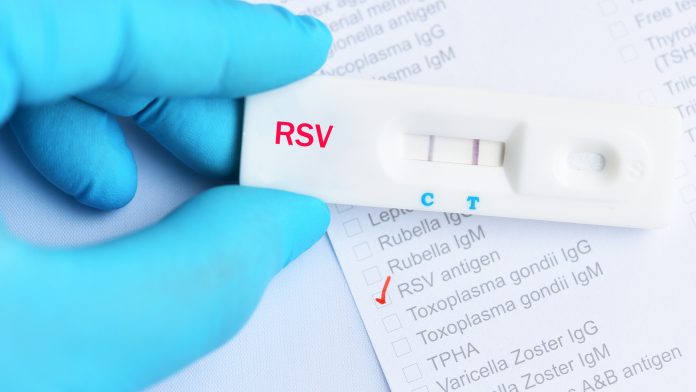
Findings from a global study published in The Lancet have highlighted the dire landscape of respiratory syncytial virus (RSV) around the world, estimating that over 100,000 children under the age of five died due to its complications in 2019.
The analysis, performed by an international research team, identified that acute lower respiratory infection caused by the respiratory syncytial virus was responsible for over 100,000 deaths in children under five years old and 45,000 deaths in infants under six months old, with 20% of the global RSV cases occurring in this age group. This is the first study to look at global deaths caused by the virus in narrow age brackets.
Harish Nair, the co-author of the paper from the University of Edinburgh, commented: “RSV is the predominant cause of acute lower respiratory infection in young children, and our updated estimates reveal that children six months and younger are particularly vulnerable, especially with cases surging as COVID-19 restrictions are easing around the world and majority of the young children born in the last two years have never been exposed to RSV (and therefore have no immunity against this virus).
“With numerous RSV vaccine candidates in the pipeline, our estimates by narrower age range help to identify groups that should be prioritised, including pregnant people, so that children in the youngest age groups can be protected, similarly to current strategies which offer vaccines for whooping cough, typhoid, and tetanus to pregnant people.”
The global burden of RSV
The results of the study correlate to previous estimates from 2015, where the global number of annual RSV cases in children up to five years old was believed to be 33.1 million, resulting in 118,200 total deaths. However, the new estimates utilised modelling data from over 100 studies to attain a more accurate assessment of the worldwide landscape of RSV mortality at global, regional, and national levels. This enabled the investigators to determine mortality rates for significantly narrower age groups, such as those between 28 days to six months old, the age range with the highest RSV fatality rate and community mortality rates.
In 2019, there were 33 million acute lower respiratory infections attributed to respiratory syncytial virus in children under five, resulting in 3.6 million hospital admissions, acute lower respiratory infection episodes in children under five years old, leading to 3.6 million hospital admissions, 26,300 in-hospital deaths and 101,400 RSV-attributable deaths overall. This means that RSV caused 2% of deaths from any cause in this age range.
There were more than 6.6 million lower respiratory infections associated with RSV in children under six months old in 2019. This resulted in 1.4 million hospital admissions, 13,300 hospital deaths, and 45,700 overall deaths, equating to 2.1% of deaths from any cause in this age group.
Further analysis demonstrated that only 26% of deaths associated with respiratory syncytial virus occur in a hospital. In low- and middle-income countries, the in-hospital case-to-fatality ratio for children under five is 1.4%, whereas it is only 0.1% in high-income countries. Moreover, 97% of the overall deaths from RSV in children under five occur in low- and middle-income countries.
Xin Wang, the co-author of the study from Nanjing Medical University and the University of Edinburgh, said: “Our study estimates that three-quarters of RSVs deaths are happening outside of a hospital setting. This gap is even greater in LMICs, especially in children under six months old, where more than 80% of deaths occur in the community.
“This reflects the fact that access and availability to hospital care are still limited in these regions. Early identification of cases in the community and referral for hospital admission of sick children (particularly those with low oxygen saturation in peripheral blood), and universal effective and affordable immunisation programmes will be vital going forward
Study limitations
The researchers noted that one of the limitations of their study was variations in factors such as setting, the exact case definition for acute lower respiratory infection (ALRI), health-care access and seeking behaviour, and eligibility for RSV testing, which may have influenced mortality data. Additionally, the breakdown of age categories was limited by the available data for the study, which was obtained before the COVID-19, meaning the long-term effects of the pandemic on RSV disease burden is unknown.
Tina Hartert from Vanderbilt School of Medicine, who wasn’t involved in the research, concluded: “The influence of these data cannot be understated. There is a substantial RSV ALRI burden during the newborn period in LMICs, highlighting the potential for passive immunisation strategies to meaningfully impact child health. Policy makers will benchmark the benefits of RSV prevention against other priority public health interventions. Accurate estimates of prevention impact are critical to demonstrating the investment case for RSV prevention.”








